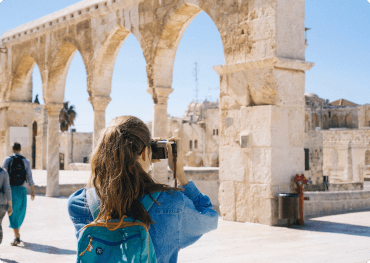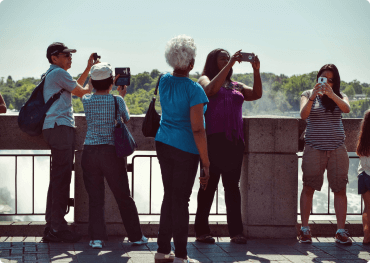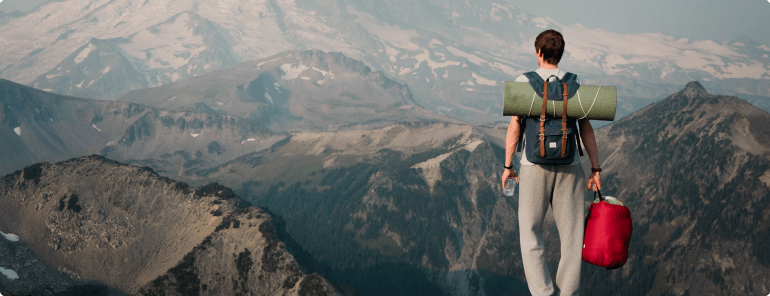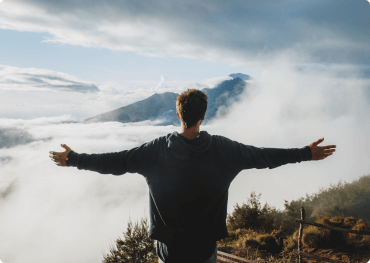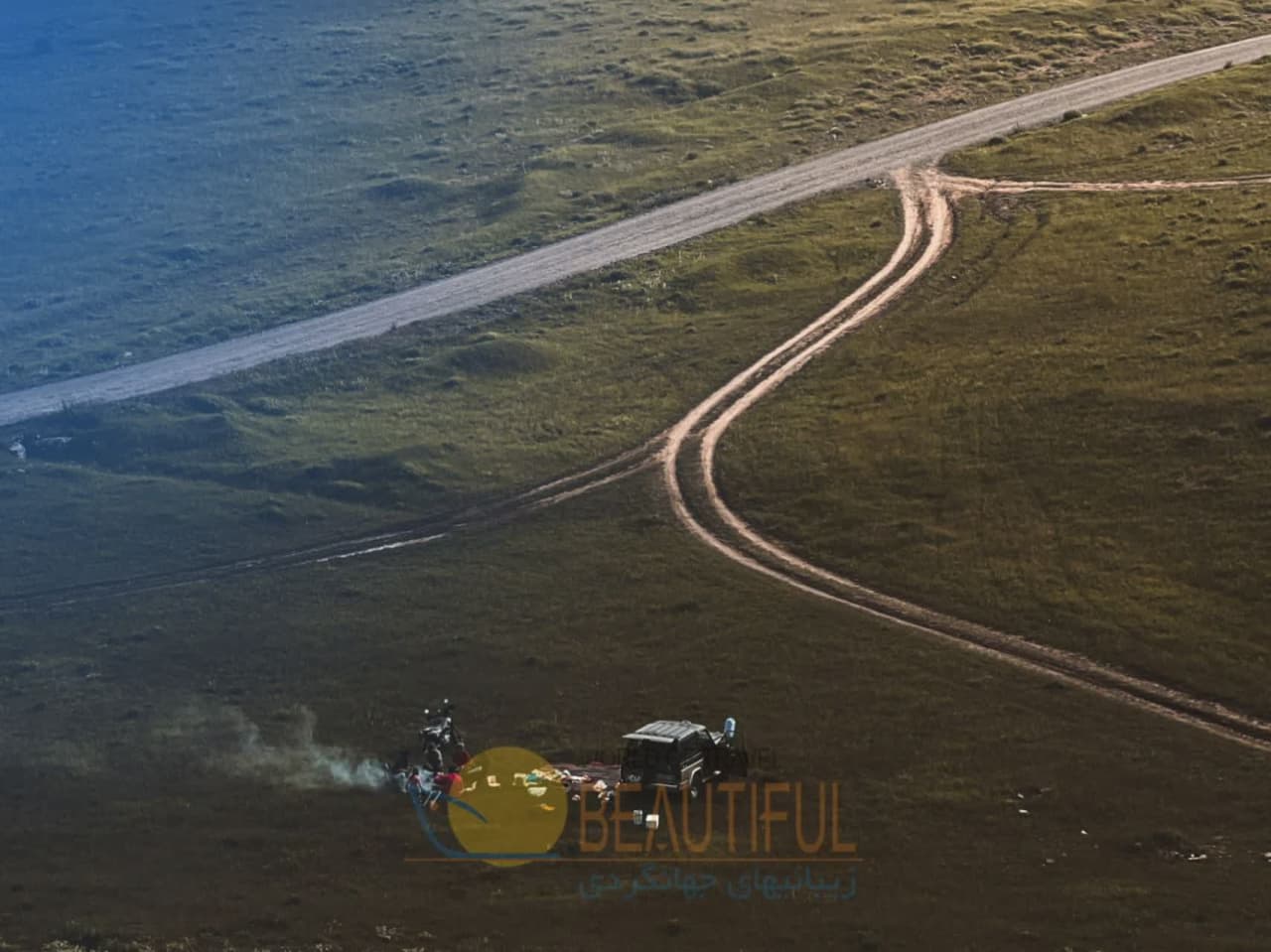
CL 519
Package Details
Day 1: Flight from your home country to Tehran capital of IRAN
We prepare ourselves for a fabulous trip to Great Persia.
Arrival to Tehran, after custom formality, meet and assist at airport and transfer to the Hotel.
Evening visit Saad Abad Palace and Tajrish Market.
O/N: Tehran
The Sa'dabad Complex is a complex built by the Qajar and Pahlavi monarchs, located in Shemiran, Greater Tehran, Iran. Today, the official residence of the President of Iran is located adjacent to the complex.
The complex was first built and inhabited by Qajar monarchs in the 19th century. After an expansion of the compounds, Reza Shah of the Pahlavi Dynasty lived there in the 1920 s, and his son, Mohammad Reza Pahlavi, moved there in the 1970 s. After the 1979 Revolution, the complex became a museum.
Tajrish Market: The market on the one hand and Rehabilitation field, from the other competent shrine and the surrounding streets have access. Reliance Big Rehabilitation is one of the oldest accents located in Tehran in this market.
Rehabilitation market a small sample of the Tehran bazaar is one of the oldest shopping centers Shamiran is the bridgehead and Rehabilitation connecting the two neighborhoods.
Day 2: Tehran- Semnan
After breakfast in hotel, we prepare to start for city sightseeing, visit Iran Bastan (Aarchaeology) & Jewels & Abgineh (Ceramic, Glass) Museums.Evening drive to Semnan (220 km).
Evening drive to Semnan (220 km). Arrival Semnan at night, check in hotel.
O/N: Semnan
Iran Bastan: It is an institution formed of two complexes, including the Museum of Ancient Iran which was inaugurated in 1937, and the Museum of the (post-) Islamic Era which was inaugurated in 1972.
It hosts historical monuments dating back through preserved ancient and medieval Iranian antiquities, including pottery vessels, metal objects, textile remains, and some rare books and coins.
There are a number of research departments in the museum, including Paleolithic and Osteological departments, and a center for Pottery Studies.Iran Ancient Museum, the first museum in Iran at the beginning of the Street 30 July, in the western part of the drill Tehran is located on the street C-beams. Construction of the museum on 21 May 1313 and the sun on the orders of Reza Shah by French architect, Andre Godard, began. The museum building was completed in 1316 and the museum opened to the public.5,500 square meters of land assigned to this museum, which is 2744 square meters. National Jewels Museum: Treasury of National Jewels Museum of the Central Bank of Iran, and the museum can also be used. The treasury-museum in the building of the Central Bank of Iran in Ferdowsi Street Tehran is located.
By the Safavid Iran's king to collect, preserve and maintain jewelry and ornamental stones did not take action by sending envoys to neighboring countries Bvdnd.dr Safavid kings to purchase and collect and preserve existing jewelry was purchased. Iran after the Afghan invasion was sent to Afghanistan with the help of some of the rare gems lot of them were returned to Iran. Nader Shah to retake part of the jewelry that had been sent to India, India sent letters to the king, but did not answer with his army to India. Nader campaign whereby the king of India gifts and jewelry donated many rare Knd.bkhsh of gifts and trophies that had collected in India never came to Iran. After returning to Iran's rare for the time part of trophies and gifts to the rulers, princes and kings and Dyarhay countries around Iran gave some of the spoils to the Shrine of Imam Reza (AS) and partly awarded to the hosts. After killing one of its commanders, Ahmed Abdali Afghan rare've had looted the treasury and part of the jewelry including Diamond Mountain of Light, who later (perhaps inevitably) was awarded the Queen of Great Britain was never returned to Iran.
In the Qajar era and part of the crown jewels collection Kayani and Korean jewelry and rare flat and stud mount, and the Golestan Palace was held. With the rise of Reza Shah Pahlavi, Crown Jewels in the basement of the marble palace passed in 1316 and after completion of the National Bank National Bank transferred the bulk of the jewels in the museum and was backing the notes. Later this jewelry as collateral for the debt to the bank was government. The new Treasury Bank Street, Tehran is being built in the hills.
The Treasury in building Iran's central bank and is also used as a museum. Most of the Crown Jewels of Iran, Safavid period, period Afshar, Qajar and Pahlavi was exhibited in the museum. Including the Sea of Light diamond, a rare Paisley, crown Farah Pahlavi, Crown Kayani, Korean jewelry, Peacock Throne (Qajar) (sun beds) and a rare flat noted.
Glassware and Ceramic Museum:is one of the museums in Tehran is. This historic house built in Qajar era and in Tehran. Avenue C bar is located. The effect on 7 Persian date Ordibehesht 1377 with registration number 2014 as one of the national monuments has been registered. Museum of Glass Museum of Glass and pottery.
This sets up 1330 home and work Qvamalsltnh and then for seven years was in the hands of the Egyptian Embassy. Then, to the Embassy of Afghanistan, Bank of Commerce, in 1355 with the cooperation of Iranian and Austrian engineers began to change.
Day 3: Semnan
After breakfast, visit Semnan.
O/N: Semnan
Iran Darband Cave is one of the largest limestone caves in 2 kilometers north of the tourist area in the city Mehdishahr, Mehdishahr city center is located in Semnan province.
The cave on the southern slopes of the Alborz mountain range at altitudes of capping, Lahrad Semitrailers Mountain, located in the north central part Mehdishahr. Darband Cave is considered one of the largest limestone caves in Iran in the past has been human habitation.
Darband Darband Cave National Tourism Mehdishahr located in the Heights area, due to strong performance of regional tectonic forces and the process of leaching by water penetration is formed.
Fault Semnan: Semnan fault in the immediate north side of the city is located north of Mount Chndran, some drift with the north east - south west that is to the south south east slope. Horizontal movement of Semnan fault is unknown, only in parts of the south slope drift with it is diagnosed. In the eyes of the Prophet (1355) features rock sequence of Paleozoic stratigraphy (particularly know), the obvious differences are the two sides of the fault, so that the facies blocks south of Central Iran and Alborz facies exposed in the Northern block have Therefore fault Semnan border zone between central Iran and Alborz introduced. Although the length of the fault of Damghan Garmsar are probable, but the best effect was seen only in the mountains Chndran no more than a few hundred meters long. Given the gradual transition of Alborz and Central Iran, Semnan acceptance fault is the boundary between these two zones is not so simple.
Malhe salt mine about 48 km south of East Semnan and the geographical coordinates 52 degrees 43 minutes east longitude and 35 degrees 22 minutes north latitude is located. Malhe one of the oldest salt mine and salt mines of Iran is the most active. Malhe salt mine for salt domes and salt formation was seen to be attributed to the Oligocene period.
Hot springs Semnan: The combination of these mineral springs spa in the northwest section of the city and in Semnan distance of 21 km from the city. The Highlands has been around hot springs. Water fountains of waters Kolororeh category calcic sulfate and sulfur and treatment of diseases of bile, kidney, liver, gout, rheumatism and joint pain are effective. Top of Form
Day 4: Semnan - Firouz kooh - Sari
After breakfast, drive to Sari (215 km) in the way visit Firouz kooh.
O/N: Sari
Firouzkooh is a city in and the capital of Firuzkuh County, Tehran Province, Iran. At the 2006 census, its population was 15,807, in 4,334 families. It is located north-east of Tehran, in the middle of Alborz Mountains. Previously, it was part of Mazandaran Province.
The city has a relatively cool and windy climate. It has some natural attractions and is famous for them, including Tange Vashi, Boornic Cave, Roodafshan Cave, Gardane Gadook and the sight-seeing of villages like Varse-Kharan, Zarrin Dasht, Darreh-Deh, and Kaveh Deh.
Khomedeh and Harandeh villages near the city Firoozkooh the distance between the two villages are fruit orchards like apple, walnut, cherry, olive and barberry
Nimrod is filled with water from the river area attractions. Bournik of the area's attractions is amazing cave, a cave with paths and multiple classes still many years after its discovery, many parts of it are unknown.
Day 5: Sari - Ramsar
After breakfast, drive to Ramsar (248 km).
O/N: Ramsar
Ramsar city with indescribable beauty in the western end of the province and the beautiful forest on the slopes of the Alborz and dream beaches of the Caspian Sea lie with its tourist attractions and accommodation, catering and recreational and shortest distance between the mountains and the sea with the title of the bride cities as poles tourism is important in the country and even the world.
Ramsar old hotel with beautiful architecture and green space in the city center at the foot of forested mountains with spectacular Landscaping Solar in 1317 and placed under Reza Shah Pahlavi been exploited. About five thousand square meters on three floors of the hotel infrastructure in terms of architecture, beauty, location and equipment is one of the most famous hotels in the Middle East.
Lifts Ramsar: The lifts are 10 minutes from Ramsar to CHABOKSAR of origin coast to the mountain extended, and attractive environment. Considering the kart track and shopping centers, cafes and entertainment centers and joyful atmosphere full is triggered. Ramsar lifts as the lifts Country along the Caspian coast to the highlands forest with 40 rooms over 2 kilometers long and is created by the private sector. This lifts the tourism entertainment facilities catering units with a capacity of 50 rooms equipped with carrying capacity of 450 people per hour.
Day 6: Ramsar –Shanderman
After breakfast, drive to Shanderman. In the way visit Astaneh, Rasht and Fouman.
O/N: Shanderman
Astaneh Ashrafieh city officials to develop a plan known as Plan shrine shrine in which they plan to expand the city into one of the largest parts of the resort shrine, the shrine of. Now Astaneh Ashrafieh is the fourth holy city of Iran in this regard.
Seyyed Jalal al-Din Ashraf sons of Imam Musa Kazim (AS) and just tons brother of Imam Reza (AS) and his noble mother's name is N. Astaneh Ashrafieh his shrine in the city center, is located 35 km from the city of Rasht. Jalaluddin Syed Ashraf Ali Alavi second face is well known that after Hasan Yahya bin Abdullah between the years 206 to 210 AD were entered into the land of Gilan. Initial construction of the shrine in the year 311 AH, but has been rebuilt several times. Every year, especially during the month of Ramadan, Muharram and Safar tens of thousands of pilgrims from different parts of the pilgrimage to the holy city Astaneh Ashrafieh travel. Seyyed Jalal ancient shrine of native tourists to make a pilgrimage to the city Astaneh Ashrafieh been traveled. That's why there is this shrine is due to the development of Astana.
Fuman is a city in and the capital of Fuman County, Gilan Province, Iran. At the 2006 census, its population was 27,763, in 7,728 families.
Rice has been cultivated in this region for many years, where some indigenous cultivars (landrace) were conventionally bred by farmers. Fuman also produces Persian cookies called Koloocheh. The Fuman Koloocheh is thinner and larger than its famous brethren, the Lahijan Koloocheh. While not as well publicized and mass-produced as the Koloocheh from Lahijan, Fuman's Koloocheh is quite popular and tasty. To learn more about Koloocheh see Koloocheh and Masgati
Kasma Rural District: In the Central District of Sowme'eh Sara County, Gilan Province, Iran. At the 2006 census, its population was 16,062, in 4,557 families. The rural district has 36 villages.
Shanderman one of the parts of the city Masal in Gilan Province in northern Iran has one of the most important points of the city issued the largest village of Gilan Siah Mard is the village which has four thousand people.
Day 7: Shanderman – Ardebil
After breakfast, drive to Ardebil (210 km). In the way visit Khalkhal.
O/N: Ardebil
Khalkhal is the name of the center as well as an anklet city in Ardebil, Iran is. Springs of hot water anklets in 22 km north of West Hrvabad intended for the treatment of joints and bones and nerve and skin is located. Also in the southwest Hrvabad in the village oven
There are several hot springs where the temperature 30 to 50 degrees Celsius is. About 18 kilometers south Hrvabad volcanic activity Quaternary is seen. Vhmchnn in anymore ankletsand near the village of fuel in the river every year there anymore anklet spa guests of this nature benefit.
One of the landmarks of Gilan province and the city is trying Gisoum Forest Park. Beauty and towering trees to create a forest tunnel is the heart of every visitor is gone. In the south Gisoum, Rezvanshahr to 14 km and its north, the city Hashtpar (effort) at a distance of about 20 km away.
Gisoum road tunnel in the mountain forest with a cool breeze combined efforts to bring peace of body and soul every passer-by to comfort his soul Dhd.gysvm is where forest and sea meet and enchantment of nature is to its climax.
Although the first half of Gisoum only tourists, but it must be said that if in the first half of March and also make the trip to this area are not tourist spots of natural beauty in autumn and winter Gisoum is less than the spring and summer. Neighboring forest and sea in this region of the north of the country, the beauty of much benefit to the eyes of tourists.
This beautiful beach during the New Year attracts large populations of nature enthusiasts from all over the country, travelers from around the country come to witness the first days of spring in the forest and sea to sit and watch the beautiful nature of efforts are growing.
There Gisoum has caused Gtgsr next to a village hospitality village with cottages and residents because of the presence of too many passengers turned their homes into the hospitality suites. Gisoum forest with an area of 80 hectares, with its special rainforest trees and plant species, landscape beauty for tourists, this park with facilities such as parking inside the park, children's play equipment, gym, campground, beach, hotel, daily picnic areas, nature tourism, trails, set the remaining forest areas in the east, boxwood forest and natural museum of plants waiting for tourists.
Day 8: Ardebil – Sar ein
Morning after breakfast visit Sheykh Safi Aldin Ardabili tomb & Shorabil Lake. Evening travel to Sar ein (30 km).
O/N: Sar ein
Safi-ad-din Ardabili The tomb of Safi al-Din in Ardabil, Iran Sheikh Safi-ad-din Is’haq Ardabili (of Ardabil) (1252–1334) (was the Kurdishand Sunni. Muslim eponym of the Safavid dynasty, founder of the Safaviyya order, and the spiritual heir and son in law of the great Sufi Murshid (Grand Master) Sheikh Zahed Gilani, of Lahijan in Gilan province in northern Iran. Most of what we know about him comes from the Safvat as-safa, a hagiography written by one of his followers.
Lineage Safi-ad-din was of Kurdish origins. According to Minorsky, Sheykh Safi al-Din’s ancestor Firuz-shah was a rich man, lived in Gilan and then Kurdish kings gave him Ardabil and its dependencies. Minorsky refers to Sheykh Safi al-Din’s claims tracing back his origins to Ali ibn Abu Talib, but expresses uncertainty about this.
The male lineage of the Safavid family given by the oldest manuscript of the Safwat as-Safa is:"(Shaykh) Safi al-Din Abul-Fatah Ishaaq the son of Al-Shaykh Amin al-din Jebrail the son of al-Saaleh Qutb al-Din Abu Bakr the son of Salaah al-Din Rashid the son of Muhammad al-Hafiz al-Kalaam Allah the son of Javaad the son of Pirooz alKurdi al-Sanjani (Piruz Shah Zarin Kolah the Kurd of Sanjan)" similar to the ancestry of Sheykh Safi al-Din’s father in law, Sheikh Zahed Gilani, who also hailed from Sanjan, in Greater Khorassan. An etched figure of a giant hand, in Safi-ad-din Ardabili Mausoleum, showing Twelver Shi'a sign of Panj-tan-e Āl-e Abā 2 Ascension as Murshid Sheikh Safi al-Din inherited Sheikh Zahed Gilani's Sufi order, the "Zahediyeh", which he later transformed into his own, the "Safaviyya". Sheikh Zahed Gilani also gave his daughter Bibi Fatemeh in wedlock to his favorite disciple. Sheikh Safi al-Din, in turn, gave a daughter from a previous marriage in wedlock to Shaikh Zahed Gilani's second-born son.
Over the following 170 years, the Safaviyya Order gained political and military power, finally culminating in the foundation of the Safavid dynasty. Poetry Sheikh Safi al-Din has composed poems in the Iranian dialect of old Tati. He was a seventh-generation descendant of Firuz-Shah Zarrin-Kolah, a local Iranian dignitary.
Shorabil is a lake located in a hilly area south of the Iranian city of Ardabil. Ardabil University is located near the lake. The surface of the lake is 640,000 m², and is covered with a thin white layer of minerals which are useful in healing skin diseases and rheumatism. The leisure complex of Shorabil is located near the lake. The lake is ringed by a scenic roadway offering views of the lake and the nearby Sabalan Mountain.The basin was covered with mud and high concentrations of salt and other minerals so that no fish could survive. In 1998, the government of Ardabil started diluting the lake water by linking rivers from the surrounding area. After almost 2 years they also started growing a kind of fish called "ghezel-aala" in the lake which is famous for having pink meat and wonderful taste. In 1999 a floating restaurant was built and placed in the middle of the lake. Which was transferred to the government but it was later shifted to the shore as they could not handle the maintenance and other technical difficulties.
Day 9: Sar ein
Sar Ein a small town 30 kilometers west of Ardabil.
O/N: Sar ein
Sar einis a city in and the capital of Sareyn County, in Ardabil Province, Iran. Sareyn is known for its hot springs. The population is about 8000, and increases to more than 20000 in the summer because of the many tourists who go there due to the charming climate. It stands 28 km from Ardabil and total area is 1.28 square km2. At the 2006 census, its population was 4,478, in 1,135 families.
The Sareyn springs are near an inactive volcano in mount Sabalan and its water contains sulphur particles and it is believed that it is good for bone and joint pains.The word Sareyn in the Persian dictionary means "spring’s Outlet".The climate and hot springs are the first attractions to tourists who travel to this region from different parts of Iran and the world.Sareyn is also famous for its 'Ashe Doogh' (Yogurt Soups), during the busy summer periods, it is not uncommon for many of the local shops to be seen selling and preparing this soup.
Hot springs (spa) have always been in Sarein but the 1990s earthquake caused some of them to get colder or hotter. The water is heated largely by the Sabalan Mountain which is Iran's second highest mountain after Damavand. Many tourists visit Sabalan. Its most interesting feat is the 'crater' top which contains a lake of acidic water. Sarein is also very famous for its honey, again like the soup, many of Sarein's shops sell honey which is produced locally by the Bee keepers of the area.
The main language of Sarein is the Azeri dialect, however Persian is understood.
There are 9 hot springs in Sarein, with 'Gavmesh Goli' being the hottest, with water reaching 67 degrees, and turning out around 80 liters per second from the source. There is also several cold water springs nearby, with the most popular being situated in a small village nearby called 'Vila Dareh' - the water here is fizzy and is very good for the kidneys.The climate is by far a great asset, and many Iranians from Tehran and other big cities escape to the tranquility and good weather that Sarein has to offer.
Sar ein Springs:
Qarah Soo (A'saab) Thermal Spring - Relieving
Sari Soo Thermal Spring - Relieving
Gavmish Goli Thermal Spring - Relieving and good for Rheumatism
General Thermal Spring - Good for Joint Pains
Besh Bajilar Thermal Spring - Good for Joint Pains
Qahveh Suei Thermal Spring - Good for Joint Pains
Pehenlu Thermal Spring - Relieving
Day 10: Sar ein
Full day visit Sar ein.
O/N: Sar ein
Alvarez area on the southern slope of Sabalan mountains 4811 meters are unique landscapes, pleasant weather in the summer and ski resort tourism and recreational areas attractive Ardabil province each year a large number of tourists travel to this place. The report, The Road to 24 km and a width of 18 meters from the resort town Sareyn due to having multiple mineral water hot and cold b is unique in the world, enthusiasts Alvarez will lead to the area.
The road that descends from the outset maze of steep and deep valleys and passages along with a certain excitement in the hearts of drivers and passengers in it and watch waterways, trees, meadows, fields and cliffs heights of the the most colorful of Amazing people at the bottom of the valley road Raazqdrt raises unique creator. Escarpment slope and the road gets steeper Alvarez over the village and ski resort at the end of the road and nearby peaks. Alvarez tourist area attractions for all seasons and mountaineering in summer to the possibility of snow in the winter sports tourism is an important feature of this place. Experts say Alvares ski resort in terms of snow cover during the six months of the year and additional leisure facilities including Sareyn close to the spa is unique in the world. Alvares ski resort on the slopes of snow-covered mountains with facilities traps thirty Liege 4811 meter Sabalan is another resort that attracts enthusiasts in your hand. Lifts with a length of 1250 m, residences and hotels in the city Sareyn equipped apartments, warm waters Sar ein and snow and water reserves in the privacy of other facilities the resort area.
Gurgur cascading Alvarez: This waterfall is 20 km from the city Sar ein to the ski resort Alvarez and 35 km Ardebil waterfall is situated at an altitude of 2420 meters above sea level located Abshar from a spring source as Gorgor, in the valley Alvarez, one the widest and Basfatryn valleys Sabalan is located. This spring is very high and the discharge of water from the pores of the rock wall overlooking the valley with the pressure to be poured out.
Day 11: Sar ein
Full day free.
O/N: Sar ein
Day 12: Sar ein _ Tabriz
After breakfast, drive to Tabriz (200 km). Evening visit Eli goly.
O/N Tabriz
Tabriz is the most populated city in the Iranian Azerbaijan, one of the historical capitals of Iran, and the present capital of East Azerbaijan Province. Located in the Quru River valley between the long ridge of the volcanic cones of the Sahand and Eynali mountains, Tabriz' elevation range between 1,350 and 1,600 meters above sea level. The valley opens up into a plain that gently slopes down to the eastern shores of Lake Urmia, 60 kilometres (37 miles) to the west. With cold winters and temperate summers, the city is considered a summer resort.
Tabriz has a population of 1,549,453. The population consists mostly of Iranian Azerbaijanis who speak the Azerbaijani language. It is a major heavy industry hub for automobile, machine tools, refineries and petrochemical, textile, and cement production industries. The city is famous for its handicrafts including hand-woven rugs and jewelry. It is known for locally made confectioneries, chocolates, dried nuts, and traditional food. Tabriz is also an academic hub and a site for some of the most prestigious academic and cultural institutes in the northwest of Iran.
The city has a long and turbulent history with its oldest civilization sites dated back to 1,500 BC. It contains many historical monuments representing the transition of Iranian architecture in its long historical timelines. Most of the preserved historical sites in the city belong to Ilkhanid (of Mongol Empire), Safavid, and Qajar area, among them is the grand Bazaar of Tabriz which is inscribed as a World Heritage Site in 2010.
From the early modern era, the city was pivotal in the development, movement, and economy of three neighboring regions, namely that of the Caucasus, Eastern Anatolia, and central Iran. From the 19th century, it became the most important city in the country in numerous respects. As the closest Iranian hub to Europe, many aspects of the early modern modernisation in Iran started in Tabriz. Prior to the forced ceding of Iran's Caucasian territories to Imperial Russia following the two Russo-Persian Wars of the first half of the 19th century, Tabriz was the main city in the implementation of Iranian rule for its Caucasian territories due to its proximity. During almost the entire Qajar period (up to 1925), it functioned as the seat for the crown prince as well.
Elgoli or Shahgly one of the main promenade, the city of Tabriz in the South East and is located 7 km from the city center. This took place Qqvyvnlvha created during the Safavids expanded. Shahgly lake depth of 12 meters and the area where sailing is done. The amusement park (Lunapark) and also inside the park there are several motels. With the construction of Pars Hotel Elgoli, this resort has a global aspect.
Shahgly before the Safavids, the largest source of water supply for watering gardens and areas east of Tabriz to Tehran after Tplybagh was. In the reign of the Safavids, all the sand and contaminate the inner courtyard was empty and the stone walls around its current lake was drawn. During the Qajar Shahgly streets for pedestrians was built around the pool and in near the road, trees, poplar, willow and flowers of petunia in a number of rows were planted to decorate the walkway and purity of water and air. Shahgly in the side of the Municipality of Tabriz was assigned to be converted into a public park. Seyyed Baqer Kazmy (Mhzbaldvlh) then Governor of Eastern Azerbaijan, the first major overhaul in the area and walkway to accomplish this. At the center of Shah Goli Pool, Klahfrhngy octagonal mansion that is now used as a banquet hall and palace King's famous goal. The building was previously adobe building that was demolished in 1346 and the efforts of the Municipality of Tabriz and the governor, gave way to a beautiful building and strengthening.
Day 13: Tabriz
Today after breakfast in hotel, we go to visit Blue Mosque and Museum, then visit to Grand bazaar and House of constitutional of Tabriz.
O/N: Tabriz
The Blue Mosque is a famous historic mosque in Tabrīz, Iran. The mosque and some other public buildings were constructed in 1465 upon the order of Jahan Shah, the ruler of Kara Koyunlu.The mosque was severely damaged in an earthquake in 1779, leaving only the iwan (entrance hall). Reconstruction began in 1973 by the late Reza Memaran Benam under the supervision of Iranian Ministry of Culture. However, the tiling is still incomplete.
The Blue mosque of Tabriz was built upon the order of Jahan Shah the ruler of Kara Koyunlu dynasty which made Tabriz the capital of his Kingdom. His Kingdom covered major parts of modern Iran, Azerbaijan, and Turkey. He was killed by Uzun Hassan (the ruler of Ak Koyunlu) and buried on the only parts of the mosque that survived.The mausoleum was built in the southern section of the mosque and is entirely covered with high marble slabs on which verses from Quran are engraved in Thuluth script on a background of fine arabesques. The roof of the mausoleum and the main dome chamber of the mosque collapsed during an earthquake in 1779 A.D. and was rebuilt in 1973 thanks to the efforts of Mohammad Reza Memaran Benam (a famous architect from Tabriz) under the supervision of the national organization for preservation of ancient monuments.
Bazaar of Tabriz: Tabriz has been a place of cultural exchange since antiquity. Its historic bazaar complex is one of the most important commercial centres on the Silk Road. Located in the center of the city of Tabriz, Iran, the structure consists of several sub-bazaars, such as Amir Bazaar (for gold and jewelry), Mozzafarieh (a carpet bazaar, sorted by knot size and type), shoe bazaar, and many other ones for various goods such as household items. The most prosperous time of Tabriz and its bazaar was in the 16th century when the town became the capital city of the Safavid kingdom. The city lost its status as a capital in the 17th century, but its bazaar has remained important as a commercial and economic center. Although numerous modern shops and malls have been established nowadays, Tabriz Bazaar has remained the economic heart of both the city and northwestern Iran.Tabriz Bazaar has also been a place of political significance, and one can point out its importance in the Iranian Constitutional Revolution in the last century and Islamic Revolution in the contemporary time.The bazaar was inscribed as a World Heritage Site by UNESCO in July 2010.
Museum (Home Constitutional): The Constitution House of Tabriz, also known as Khaneh Mashrouteh, is a historical edifice located next to the Great Bazaar of Tabriz, on Motahari Ave in Tabriz, Iran. During the years which led to Constitutional Revolution and afterwards the house was used as a gathering place of the leaders, activists and sympathizers of the movement. Among them, the most famous people were Sattar khan, Bagher Khan, Seqat-ol-Eslam Tabrizi and Haji Mirza Aqa Farshi and the founder Haji Mehdi Kuzeh kanaani, himself a revolutionary activist and a well-reputed person of the time; who was named Abolmele, i.e. the father of the nation at the time. . The two-story building was constructed in 1868 by Haj Vali Me'mar-e Tabrizi. It has numerous rooms and halls. The most beautiful part of the house is a skylight and corridor decorated with colorful glass and mirrors.
Day 14: Tabriz - Kandovan
0830 AM breakfast in hotel, then travel to Kandavan is village far from Tabriz around 62KM, this village is in Sahand Rural District, in the Central District of Osku County, East Azerbaijan Province, Iran. This village exemplifies manmade cliff dwellings which are still inhabited. The troglodyte homes, excavated inside volcanic rocks and tuffs similar to dwellings in the Turkish region of Cappadocia, are locally called "Karaan". Karaans were cut into the Lahars (volcanic mudflow or debris flow) of Mount Sahand. The cone form of the houses is the result of lahar flow consisting of porous round and angular pumice together with other volcanic particles that were positioned in a grey acidic matrix. After the eruption of Sahand these materials were naturally moved and formed the rocks of Kandovan.
Around the village the thickness of this formation exceeds 100 m and with time due to water erosion the cone shaped cliffs were formed. At the 2006 census, the village population was 601, in 168 families this village also famous for mineral spring water useful for urinary stones, every day 100 s of peoples going to drink it and take in bulk for their use.
Lunch in local restaurant in Kandavan and return to Tabriz.
Day 15: Tabriz – Departure
After breakfast, check out hotel and transfer to airport and comeback your home.
Details
Pellentesque accumsan magna in augue sagittis, non fringilla eros molestie. Sed feugiat mi nec ex vehicula, nec vestibulum orci semper. Class aptent taciti sociosqu ad litora torquent per conubia nostra, per inceptos himenaeos. Donec tristique commodo fringilla. Duis aliquet varius mauris eget rutrum. Nullam sit amet justo consequat, bibendum orci in, convallis enim. Proin convallis neque viverra finibus cursus. Mauris lacinia lacinia erat in finibus.
Pellentesque accumsan magna in augue sagittis, non fringilla eros molestie. Sed feugiat mi nec ex vehicula, nec vestibulum orci semper. Class aptent taciti sociosqu ad litora torquent per conubia nostra, per inceptos himenaeos. Donec tristique commodo fringilla.
- Specilaized Bilingual Guide
- Private Transport
- Entrance Fees
- Box Lunch,Water,Dinner and Snacks
Pellentesque accumsan magna in augue sagittis, non fringilla eros molestie. Sed feugiat mi nec ex vehicula, nec vestibulum orci semper. Class aptent taciti sociosqu ad litora torquent per conubia nostra, per inceptos himenaeos. Donec tristique commodo fringilla.
- Specilaized Bilingual Guide
- Private Transport
- Entrance Fees
- Box Lunch,Water,Dinner and Snacks
Pellentesque accumsan magna in augue sagittis, non fringilla eros molestie. Sed feugiat mi nec ex vehicula, nec vestibulum orci semper. Class aptent taciti sociosqu ad litora torquent per conubia nostra, per inceptos himenaeos. Donec tristique commodo fringilla.
- Specilaized Bilingual Guide
- Private Transport
- Entrance Fees
- Box Lunch,Water,Dinner and Snacks
Pellentesque accumsan magna in augue sagittis, non fringilla eros molestie. Sed feugiat mi nec ex vehicula, nec vestibulum orci semper. Class aptent taciti sociosqu ad litora torquent per conubia nostra, per inceptos himenaeos. Donec tristique commodo fringilla.
- Specilaized Bilingual Guide
- Private Transport
- Entrance Fees
- Box Lunch,Water,Dinner and Snacks
Pellentesque accumsan magna in augue sagittis, non fringilla eros molestie. Sed feugiat mi nec ex vehicula, nec vestibulum orci semper. Class aptent taciti sociosqu ad litora torquent per conubia nostra, per inceptos himenaeos. Donec tristique commodo fringilla.
- Specilaized Bilingual Guide
- Private Transport
- Entrance Fees
- Box Lunch,Water,Dinner and Snacks







